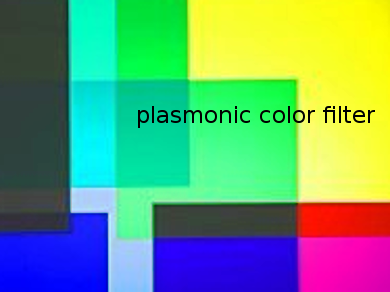Plasmonic structures could be useful for color holograms, anti-counterfeiting features, and sensors. Because they depend on surface resonances, they avoid the thickness and diffraction limit problems associated with birefringent crystals and diffraction gratings.
Benjamin Gallinet, CSEM (Swiss Center for Electronics and Microtechnology), Muttenz, Switzerland, and colleagues developed plasmonic phase retarders that filter visible light using periodic silver nanowire arrays having various wire thicknesses and depths placed between an input polarizer and an analyzing polarizer. The analyzing polarizer was rotated to 0, 45, 90, and 135 degrees to the wires to produce four contrasting colors. The color transmission depends on the spectra of the s-pol and p-pol states (electrical fields perpendicular to and parallel to the plane of incidence, respectively) of the incident light and the spectral position of the localized surface plasmon resonance of the nanowire array.
Using materials other than silver could expand the color palette, but experiments with gold and aluminum nanowires produced less color contrast. Two-dimensional structures could increase the color contrast by accommodating two plasmon resonances simultaneously.
- Four-Fold Color Filter Based on Plasmonic Phase Retarder,
Luc Duempelmann, Angélique Luu-Dinh, Benjamin Gallinet, Lukas Novotny,
ACS Photonics 2015.
DOI: 10.1021/acsphotonics.5b00604



